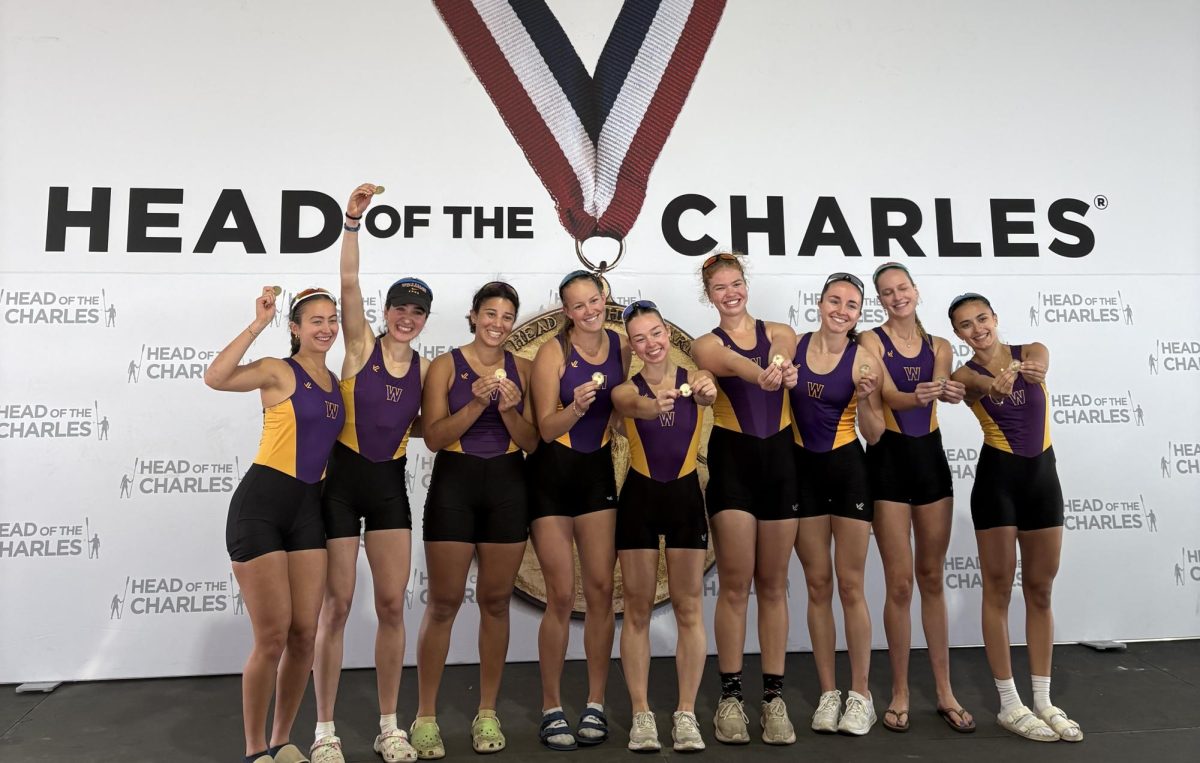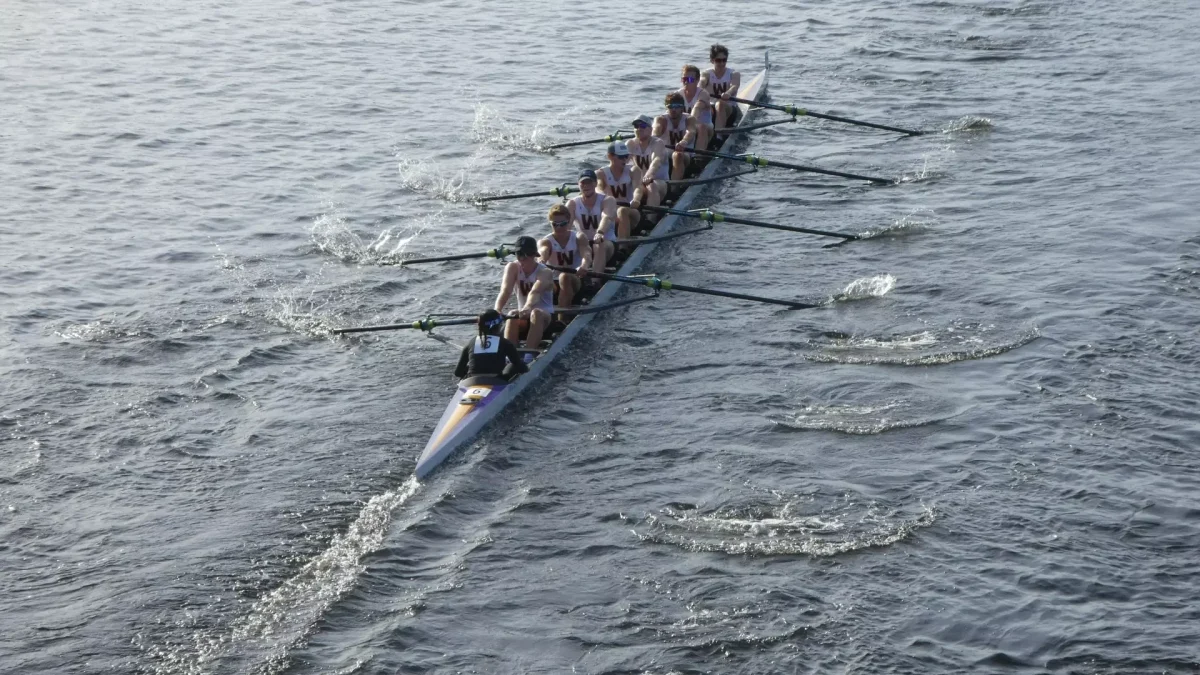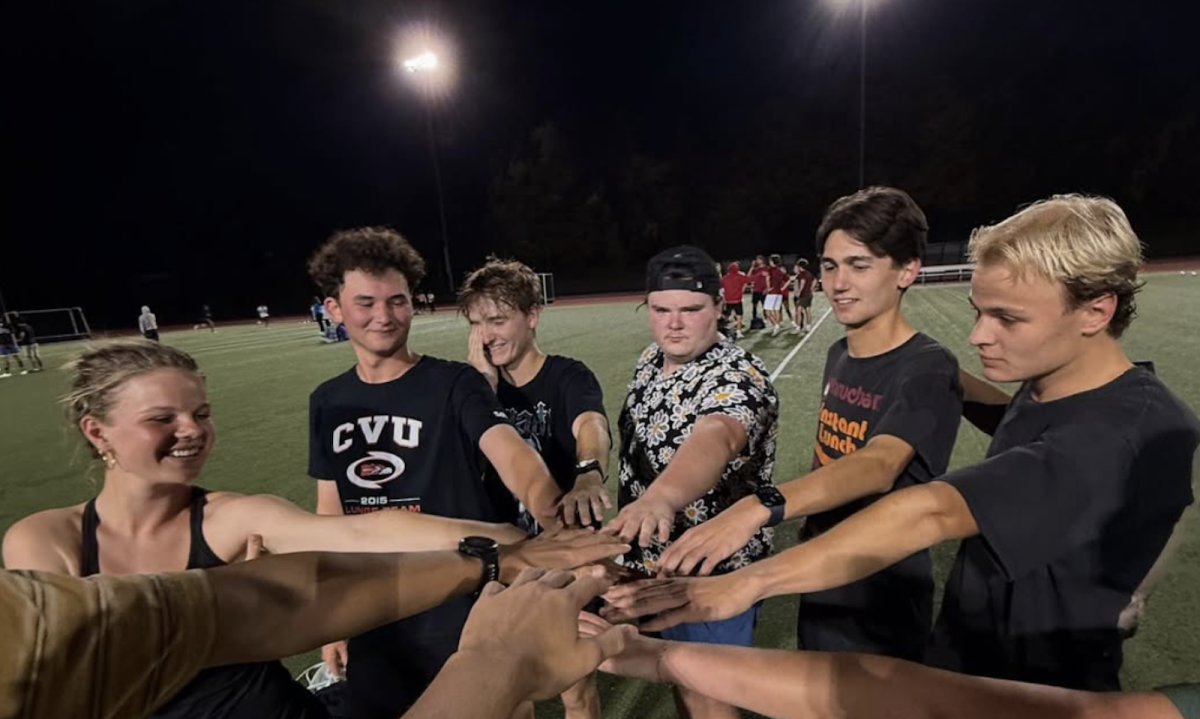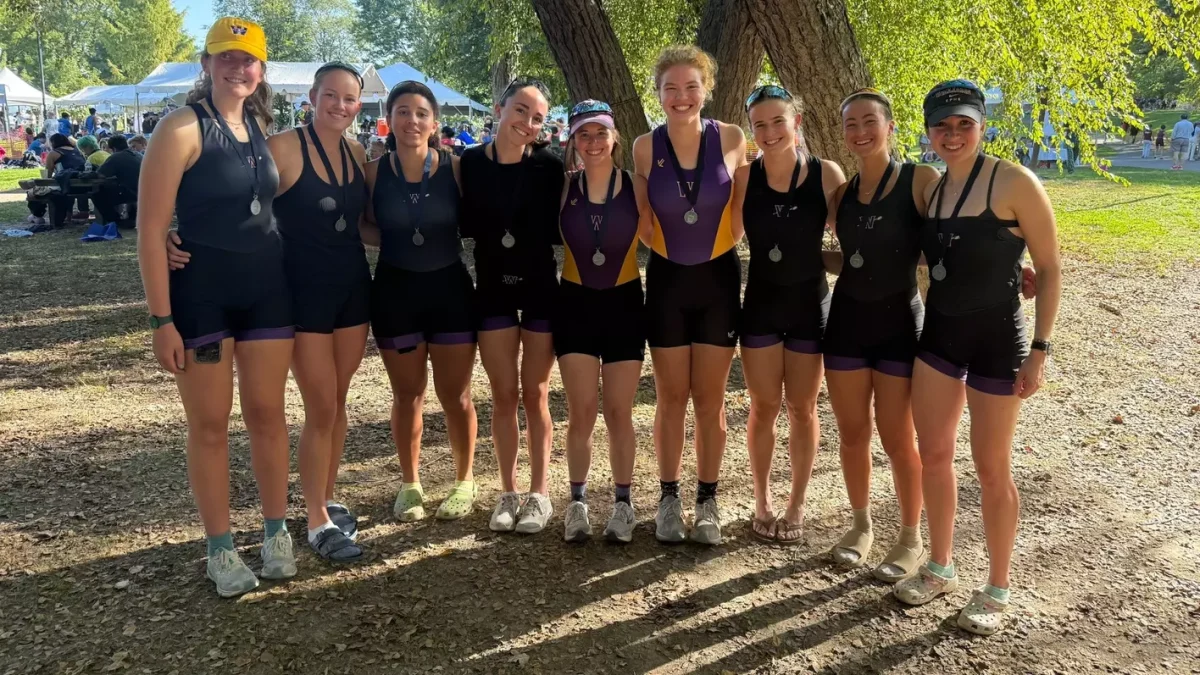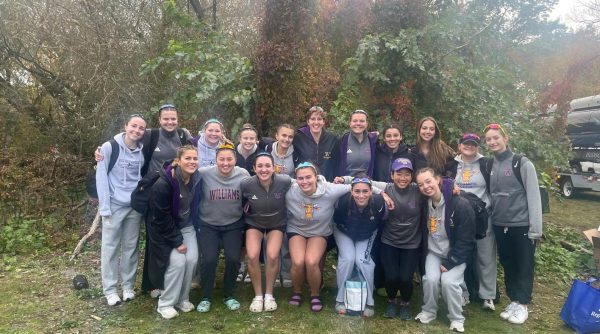
Last Sunday, women’s crew traveled across the state to compete in the famed Head of the Charles regatta on the Charles River in Cambridge, Mass. 200,000 spectators flocked to attend the largest three-day regatta in the world, during which teams representing countries, universities, and clubs from across the globe compete in over 70 different events. The Ephs sent their top two crews to compete, where they were met with tough weather conditions and the challenging course for which the race is known. The 1v placed 15th, and the 2v placed 26th in the 35-boat field.
The course — replete with frequent turns and a crowded field — is notoriously difficult for coxswains to navigate, according to Audrey Riddle ’26, the 7 seat for the 2v. “There are boats warming up coming down, there are boats in front of you, and you’re trying to pass other people at a narrow part, so the other coxswain has to yield,” Riddle said. “There are just so many things that [they] have to balance on top of talking to their crew … and our coxswain Katie [Scott ’26] killed it.”
Bow seat for the 1v Vivian Johnson ’27 agreed, highlighting the performance of her coxswain, Charis Woo ’27, as well as the Ephs’ rowing performance overall in the face of Sunday’s windy weather conditions. “Everything felt really together, and we were going really fast,” she said. “[We] could just feel [that] the boats are really good.”
Co-captain Abby Murphy ’25, the 7 seat for the 1v, praised the perseverance the Ephs showed in spite of these challenges. “We had some hiccups in the middle — it was chaos, as the Charles always is,” Murphy said. “But we got it together in the moments we needed to… I got off the water [feeling] that it was a success for us.”
Riddle believes that the opportunity to showcase all of the team’s hard work in such a widely observed competition is one of the reasons Head of the Charles is so special. “No one really sees how hard we work,” Riddle said. “It feels really special that, at every bridge on the course, there were alumni, teammates from high school, former coaches, and family, and we could totally hear their love and support.” For Murphy, competing in front of former teammates — some of whom she was awed to watch row at the Charles back when she was a first-year novice in 2021 — was a full-circle moment.
The prestige of Head of the Charles also brings together a notable field of crews. “During our warm-up, we saw the U.S. men’s national team rowing down in [its] race,” Murphy said. “There are all these moments where you [realize that] this is a big deal, which is scary, but it also [can be] a time to celebrate this crazy sport that we do.”
Johnson agreed that, although the stature of the event and some of its competitors may seem intimidating, these aspects actually enhance the experience. “Everybody’s coming into it with the same, ‘Wow, I can’t believe I’m here’ mindset,” she said. “It seems like it might be intimidating, but it’s more inspiring to see everybody around you who wants to be doing exactly what you are doing.”
Though the Ephs were unsatisfied with their standings, Murphy stressed that they do not believe that fall results at longer races like Head of the Charles, a 4.8-kilometer race, are indicative of how the team will perform in its longer and more significant spring competition season. “The fall is really about finding a swing together, building fitness, and getting racing experience,” Murphy said. “We’re beginning to build up a base of longer distances through the fall and winter so that [when we reach] the 2[-kilometer race] season, we’re not struggling as much.”
All three rowers emphasized how strongly they believe in their team and that the adversity they faced at Head of the Charles will ultimately serve as motivation for winter training and the spring season. “If anything, this lights a fire under us as we’re training for the spring,” Murphy said.
Riddle offered a notice to the rest of the competition: “[There may be] crews that finished before us [on Sunday], but we’re coming for them in the spring.”



